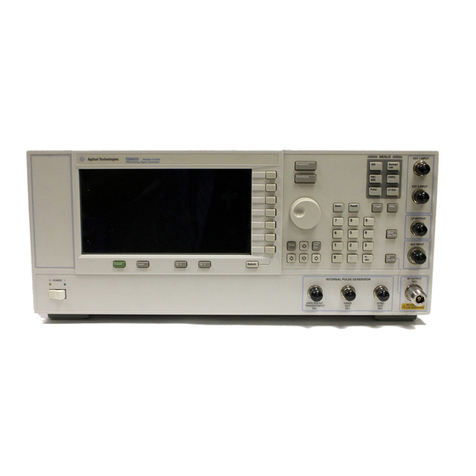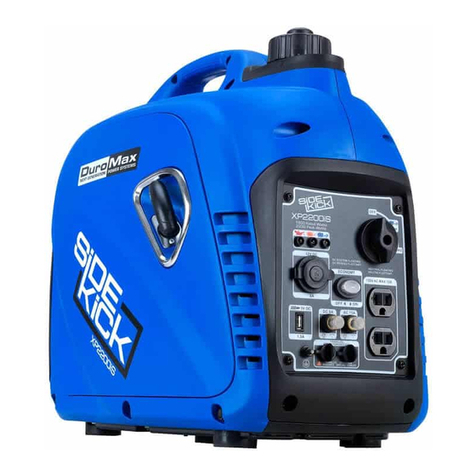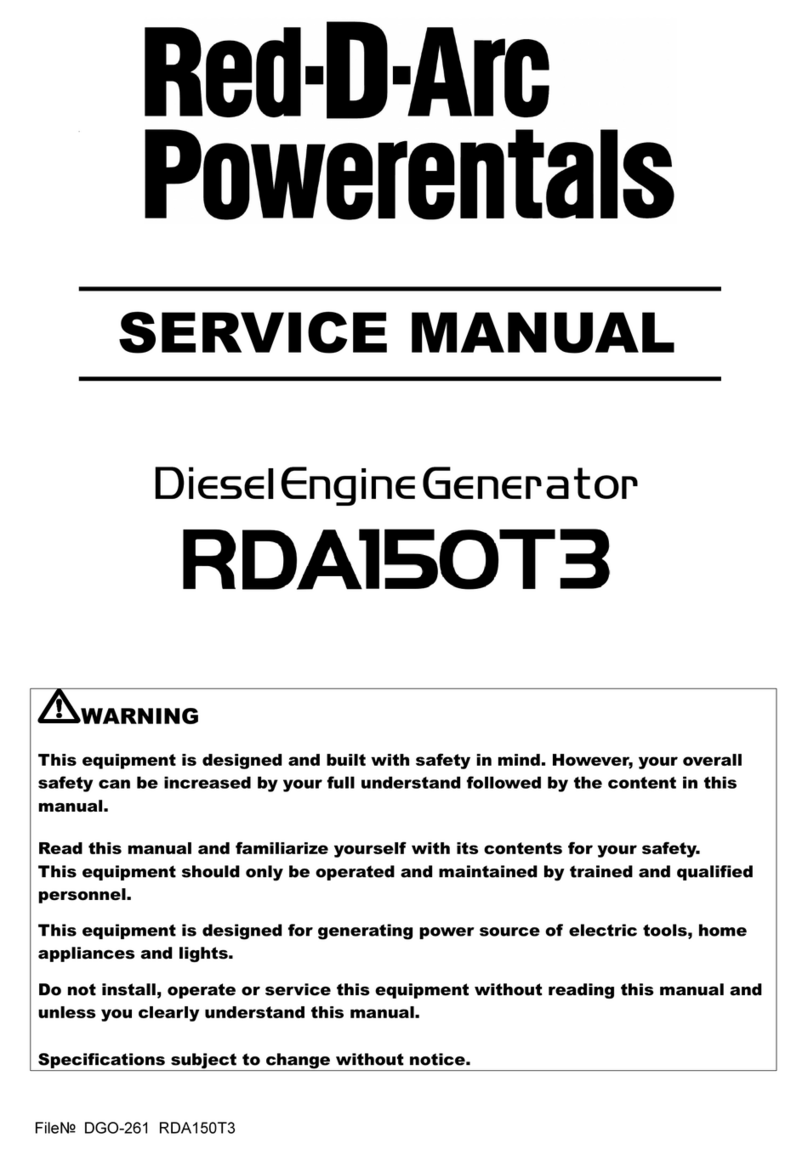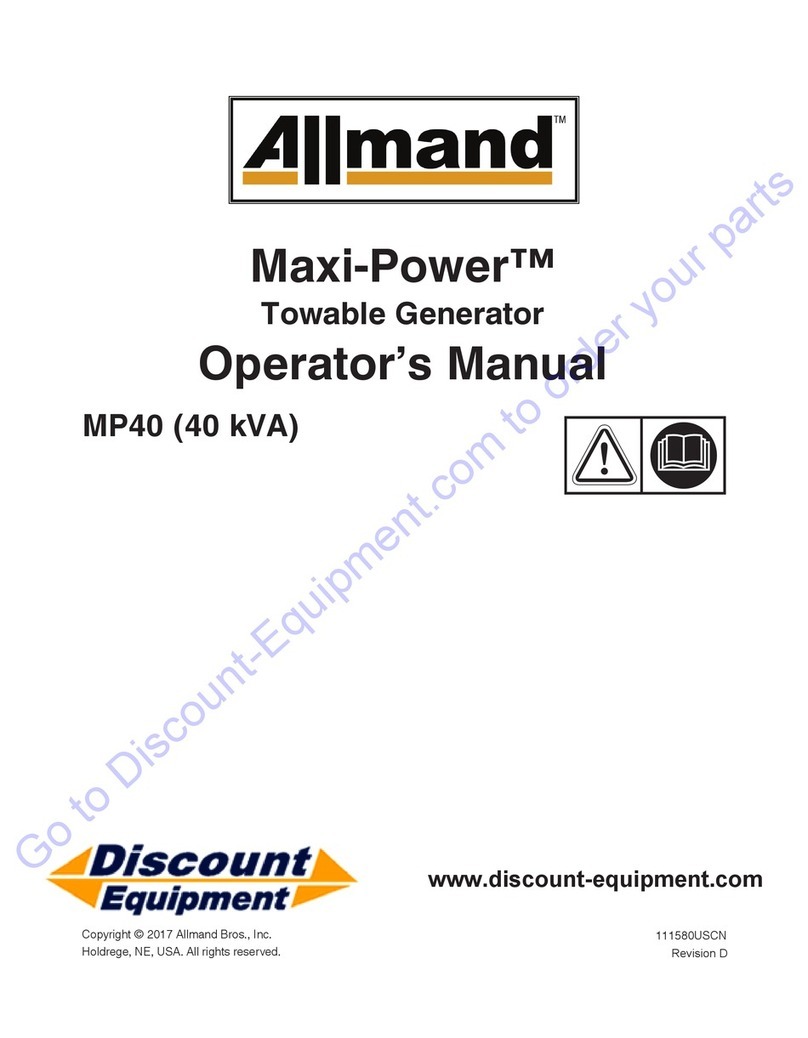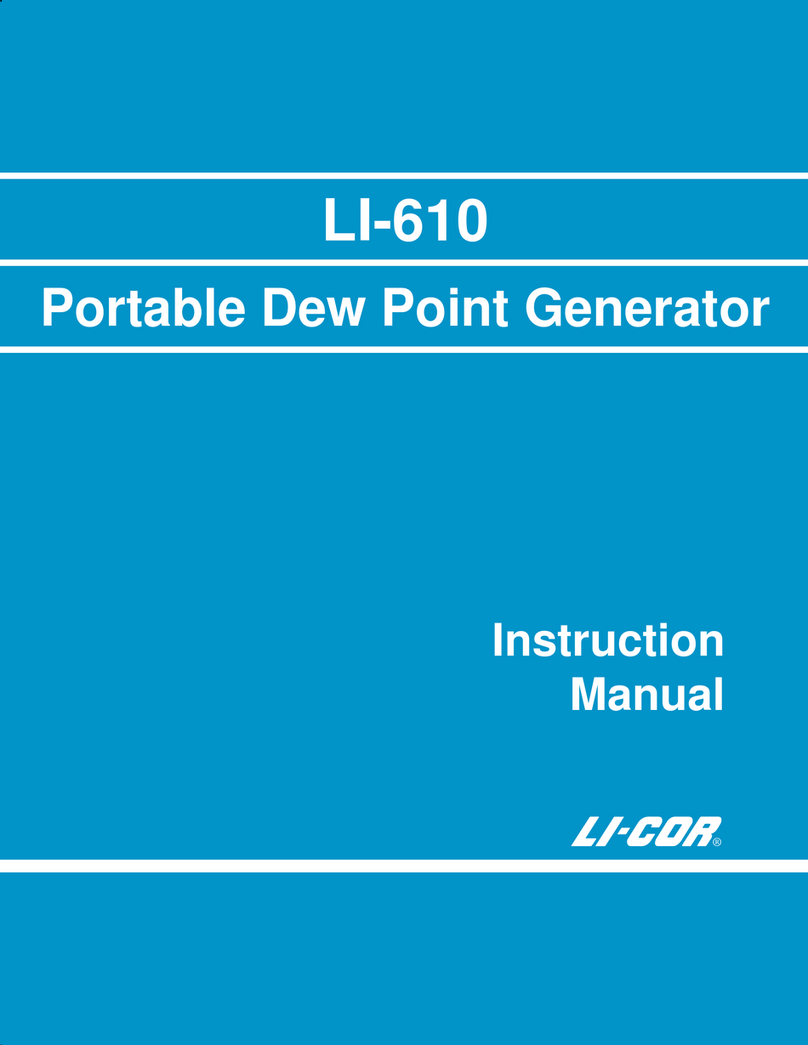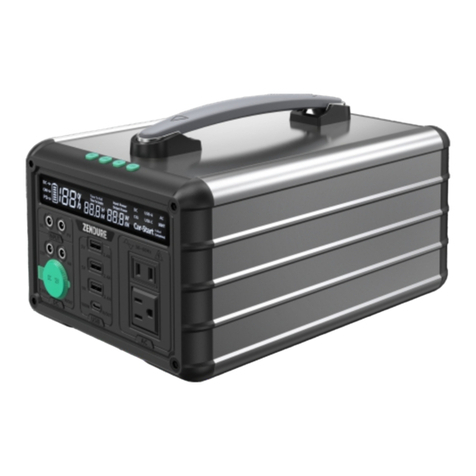Gentherm 5220 User manual

-
Do not store or use gasoline or other flamma-
ble vapors and liquids in the vicinity of this or
any other appliance.
- WHAT TO DO IF YOU SMELL GAS:
• Do not try to light any appliance.
• Do not touch any electrical switch; do not
use any phone in your building.
• Immediately call your gas supplier from a
neighbour’s phone. Follow the gas suppli-
er’s instructions.
• If you cannot reach your gas supplier, call
the fire department.
- Installation and service must be performed by
a qualified installer, service agency or the gas
supplier
WARNING: If the information in this manual
is not followed exactly, a fire or explosion may
result causing property damage, personal inju-
ry or loss of life.
WARNING: Improper installation,
adjustment, alteration, service or
maintenance can cause injury or
property damage. Read the instal-
lation, operating and maintenance
instructions thoroughly before install-
ing or servicing this equipment.
WARNING: For Outdoor Use Only

- Ne pas entreposer ou utiliser de l’essence,
d’autres liquides ou vapeurs inflammables à
proximité de cet appareil ou d’aucun autre
appareil.
- QUE FAIRE SI VOUS SENTEZ LE GAZ:
• N’allumez aucun appareil
• Ne touchez aucun commutateur électrique;
n’utilisez pas le téléphone de votre bâtiment
• Appelez immédiatement votre fournisseur
de gaz d’un téléphone dans un bâtiment
voisin, si possible. Suivez les instructions
du fournisseur de gaz.
• Si vous ne pouvez pas atteindre votre four-
nisseur de gaz, appelez le service d’incend-
ie.
- L’installation et le service doivent être effec-
tués par une personne qualifée, une compag-
nie de service ou le fournisseur de gaz.
AVERTISSEMENT:L’installation inexacte,
l’ajustement, le changement, le service ou
l’entretien peuvent causer des dommages ou
des dégâts matériaux. Lisez les instructions
d’installation, d’opération et d’entretien com-
plètement avant d’installer ou entretenir cet
équipement.
AVERTISSEMENT: Pour l’usage extérieur seulement
AVERTISSEMENT: si l’information de ce man-
uel n’est pas suivie exactement, un incendie
ou une explosion peut resulter entraînant des
dégâts matériaux, des blessures ou la perte de
vie.

GLOBAL POWER TECHNOLOGIES
5220
THERMOELECTRIC
GENERATOR
Operating Manual
28142 rev. 14
Gentherm Global Power Technologies
Unit 16, 7875 - 57th Street SE
Calgary, Alberta
Canada, T2C 5K7
Phone: 1 (403) 236-5556
Fax: 1 (403) 236-5575
www.genthermglobalpower.com *
* For latest version download from website
NOTICE TO INSTALLER: These instructions shall be left with the consumer to
retain them for future reference.


Table of Contents
1 About this Manual ............................................................................................1-1
1.1 Health and Safety ....................................................................................1-1
1.1.1 Warnings.......................................................................................1-1
1.1.2 Cautions........................................................................................1-1
1.1.3 Trained Operators.........................................................................1-1
1.2 Technical Terms ......................................................................................1-1
2 Quick Start Procedure......................................................................................2-1
2.1 Installation................................................................................................2-1
2.2 Start Up....................................................................................................2-1
2.3 Adjustment...............................................................................................2-2
2.4 Performance Log .....................................................................................2-2
3 Technical Specifications..................................................................................3-1
3.1 Overview..................................................................................................3-1
3.2 Options.....................................................................................................3-1
3.3 Weights and Measures............................................................................3-3
3.4 Ignitor Control System ............................................................................3-4
3.5 Data Plate ................................................................................................3-4
3.6 Fuel Consumption....................................................................................3-5
3.7 Standard Specification for Gaseous Fuel................................................3-6
4 Process Description.........................................................................................4-1
4.1 Model 5220 Thermoelectric Generator....................................................4-1
4.1.1 Fuel System...................................................................................4-2
4.1.2 Spark Ignition Control System.......................................................4-3
4.1.2.1 Resetting The Power Supply ...........................................4-3
4.1.3 Burner ...........................................................................................4-3
4.1.4 Power Unit .....................................................................................4-5
4.1.5 Cooling Fins and Fin Duct.............................................................4-6
4.1.6 Cabinet ..........................................................................................4-6
4.1.7 Optional TEG Mounting Stands.....................................................4-6
4.2 Optional 220 Watt Limiter .......................................................................4-7
4.3 Optional 220 Watt Limiter Converter .......................................................4-9
4.4 Optional Cathodic Protection Interface System.....................................4-10
5 Installation ......................................................................................................5-1
5.1 Precautions..............................................................................................5-1
5.2 Tools Required ........................................................................................5-1
5.3 Unpacking................................................................................................5-1
5.4 Assembling ..............................................................................................5-2
5.5 Mounting ..................................................................................................5-3
5.6 Supplying Fuel .........................................................................................5-4
5.6.1 Connecting the Fuel Supply ..........................................................5-4
5.6.2 Fuel Considerations.......................................................................5-4
5.7 Connecting Customer Load.....................................................................5-6
5.8 Installation of Optional L/C ......................................................................5-7

5.8.1 Attaching the L/C to TEG ..............................................................5-7
5.8.2 TEG Wiring Interconnection ..........................................................5-7
5.9 Installation of Optional CP Interface System...........................................5-8
5.9.1 Attaching the CP Interface System to TEG...................................5-8
5.9.2 TEG Wiring Interconnection ........................................................5-10
5.9.3 Connection of CP Load ...............................................................5-10
6 Start Up and Shutdown....................................................................................6-1
6.1 Before Starting ............................................................................................6-1
6.2 TEG Start-Up...............................................................................................6-1
6.3 Shutdown.....................................................................................................6-1
7 Power Output Evaluation.................................................................................7-1
7.1 Required Vset or Setup Power at Site ......................................................7-1
7.1.1 Working-out Required Vset or Setup Power...................................7-1
7.1.2 Determining Vset and Rated Power Graphically ............................7-2
7.2 Vset and Rated Power ..............................................................................7-3
7.2.1 Vset Shortly after Ignition................................................................7-4
7.2.2 Examining Vset When Going From Run To Set Up Position .........7-5
8 Adjustment ......................................................................................................8-1
8.1 Power Output Adjustment........................................................................8-2
8.1.1 Adjustment for Elevation................................................................8-2
8.1.2 Air-shutter Adjustment ...................................................................8-3
8.1.2.1 Measuring CO Emissions Levels.....................................8-4
8.1.3 Fuel Pressure Adjustment .............................................................8-5
8.2 Adjustment of Optional L/C......................................................................8-6
8.2.1 Output Voltage Adjustment............................................................8-6
8.2.2 Voltage Sensing Relay (VSR) Adjustment ....................................8-6
8.3 Adjustment of Option CP Interface System.............................................8-7
8.3.1 CP Power Output Adjustment .......................................................8-7
8.3.1.1 Series Wiring ...................................................................8-8
8.3.1.2 Parallel Wiring..................................................................8-8
9 Maintenance......................................................................................................9-1
9.1 Recommended Periodic Maintenance.....................................................9-1
9.1.1 Tools and Parts Recommended for Routine Servicing .................9-1
9.1.2 Evaluate Vset ..................................................................................9-2
9.1.3 Routine Service .............................................................................9-3
9.2 Fuel System Maintenance .......................................................................9-3
9.2.1 Draining the Sediment Bowl ..........................................................9-3
9.2.2 Fuel Filter Replacement ................................................................9-4
9.2.3 Fuel Orifice Inspection...................................................................9-5
10 Troubleshooting .............................................................................................10-1
10.1 Burner Maintenance ..............................................................................10-3
10.1.1 Air Filter Cleaning......................................................................10-3
10.1.2 Inspection of Burner Components.............................................10-3

10.2 Ignition Control System Maintenance....................................................10-5
10.2.1 Check the Spark Electrode........................................................10-5
10.2.2 Check the Pressure Switch .......................................................10-6
10.2.3 Check the Battery Voltage.........................................................10-6
10.2.4 Check the Power Supply ...........................................................10-6
10.2.5 Check if the Battery will Hold Charge........................................10-7
10.2.6 Check the Operation of the Ignition Controller .........................10-7
10.2.7 Check Solenoid Valve ...............................................................10-7
10.3 L/C Examination ....................................................................................10-8
10.3.1 Check L/C Switch Settings ........................................................10-8
10.3.2 Check Input Voltage to the L/C .................................................10-8
10.3.3 Check Output from the L/C........................................................10-8
10.4 Power Unit Examination..........................................................................10-9
10.4.1 Check for Internal Short ............................................................10-9
10.4.2 Check Internal Resistance.........................................................10-9
11 Part List ....................................................................................................11-1
11.1 Model 5220 TEG .....................................................................................11-2
11.2 Model 5220 Burner..................................................................................11-4
11.3 Model 5220 Fuel System ........................................................................11-5
12 TEG Performance Log....................................................................................12-1


LIST OF FIGURES
Figure 1 Overall Dimensions of the 5220 TEG ...........................3-3
Figure 2 5220 TEG General Assembly, shown with L/C Option ..............4-1
Figure 3 5220 Fuel System General Assembly ...........................4-2
Figure 4 Burner General Assembly ....................................4-4
Figure 5 Cut-away of a Model 5220 Thermopile ..........................4-5
Figure 6 Gross Power from Power Unit @ 20°C ..........................4-6
Figure 7 220 Watt Limiter............................................4-7
Figure 8 220 Watt L/C General Assembly ...............................4-8
Figure 9 CP Interface System General Assembly ........................4-10
Figure 10 Assembling the 5220 TEG....................................5-2
Figure 11 Model 5220 Mounting Dimensions, shown with L/C Option ..........5-3
Figure 12 Applying Thread - Sealant ....................................5-4
Figure 13 Setting-up the 5220 TEG, shown with L/C Option .................5-5
Figure 14 Wiring Diagram 5220 TEG, shown with 12 V Limiter Option .........5-6
Figure 15 Wiring Diagram 5220 TEG, Shown W/ L/C Option ................5-7
Figure 16 CP Installation .............................................5-8
Figure 17 CP Wiring for Model 5220-12 V DC, with Limiter Option ............5-9
Figure 18 CP Wiring for Model 5220-24 V DC, with L/C Option ...............5-9
Figure 19 Vset and Gross Power from Power Unit versus Ambient Temperature ..7-3
Figure 20 Vset versus Time After Ignition, Typical Response..................7-4
Figure 21 Change in Fuel Gauge Pressure vs Elevation Above Mean Sea Level,
Typical ...................................................8-1
Figure 22 Air Shutter ................................................8-2
Figure 23 Change in Vset versus Air-Shutter Adjustment, Typical ..............8-4
Figure 24 Change in Vset versus Fuel Pressure Adjustment, Typical ...........8-5
Figure 25 CP Interface System, Series Wiring Diagram .....................8-8
Figure 26 CP Interface System, Parallel Wiring Diagram ....................8-8
Figure 27 Pressure Regulator .........................................9-4
Figure 28 SI Module Wiring ..........................................10-4
Figure 29 Ignition Control Module Schematic ............................10-5
Figure 30 Momentary Open Circuit ...................................10-10
Figure 31 Model 5220 TEG ..........................................11-2
Figure 32 Model 5220 Burner ........................................11-4
Figure 33 Model 5220 Fuel System....................................11-5


Gentherm Global Power Technologies 1-1
5220 28142 Rev. 14
1 ABOUT THIS MANUAL
This manual provides instructions for the operation and maintenance of the model 5220
Thermoelectric generator.
1.1 Health and Safety
Correct operation and maintenance according to this manual is critical for proper equip-
ment function and safety. Keep the following in mind when using these instructions.
1.1.1 Warnings
Throughout this manual you will notice paragraphs preceded by the text Warning. It is
imperative that the advice in these paragraphs be adhered to, as failure to do so may
result in personal injury or death and possible damage to the equipment.
1.1.2 Cautions
Throughout this manual you will notice paragraphs preceded by the text Caution. It is
imperative that the advice in these paragraphs be adhered to, as failure to do so may
result in damage to the equipment.
1.1.3 Trained Operators
Personnel performing installation, operation, and maintenance work should be properly
trained in such functions.
1.2 Technical Terms
An operator should be familiar with technical terminology. Terms of particular signifi-
cance, defined for the model 5220, are as follows:
Thermoelectric Generator (TEG): A device that produces electrical power through the
direct conversion of heat energy to electrical energy.
Power Unit (PU): The hermetically sealed portion of the TEG that contains the thermo-
electric materials and cooling fins.
Rated Power: Model 5220 TEG power unit produces 220 W when operating in an
ambient temperature of 20ºC (68ºF). With the fuel flow held constant, TEGs operating in
ambient temperatures higher than 24ºC (75ºF) will see power output efficiency reduce,
0.8 W per ºC (0.44 W per ºF) of temperature change up to a maximum ambient tem-
perature of 65.5ºC (150ºF). Conversely for temperatures lower than 20ºC (68ºF) power
output efficiency will increase by 0.8 W per ºC (0.44 W per ºF) of temperature change.
Set-up Power: Power from the power unit for a specific ambient temperature. It is
derived from voltage across a precision load, also known as Vset.

Gentherm Global Power Technologies 1-2
5220 28142 Rev. 14
Set-up Voltage: Vset Voltage from the power unit for a specific ambient temperature,
which is proportional to set-up power. Fuel flow to the burner is adjusted so that proper
voltage exists, necessary temperature difference within the power unit maintained, to
deliver required power.
Open Circuit Voltage: Voltage at the terminals of the power unit when no current is
flowing, i.e. open circuit, which is related to the temperature across the thermoelectric
materials inside the power unit.
When a power unit lead is suddenly disconnected, breaking the circuit to the load, the
voltage measured across the power unit leaps up to a new value. This is known as the
momentary open circuit voltage (Voc). The voltage will continue to climb from that level.
In the case of the model 5220 do not allow Voc to exceed 27.0 volts, otherwise, the TEG
can be damaged.
Measured Vset:Vset measured across the power unit using a voltmeter.
Required Vset:Vset needed to achieve rated power for the present ambient temperature.
CP (Cathodic Protection): Thermoelectric generators are used in impressed current
systems for Cathodic corrosion protection of metallic structures such as pipelines.
CP Interface System: An assembly of electrical components system that acts as an
interface between the TEG and the CP load, which also provides for adjustment and
monitoring of power to the CP load.
Limiter/Converter (L/C): A specific electronic device attached between the generator
and the load that converts one level of DC voltage to another, and limits the power unit
voltage.
Manual Shutoff Valve: A manually operated valve in the gas line for the purpose of
completely turning on or shutting off the gas supply to the TEG.
Solenoid Valve (SV): A electrically actuated valve that controls the gas supply to the
burner. This Valve is operated by the Ignition Control Module.

Gentherm Global Power Technologies 2-1
5220 28142 Rev. 14
2 QUICK START PROCEDURE
This section gives the key steps for setting up the TEG. It is for the operator who is
already familiar with operating the TEG, having successfully completed Gentherm Global
Power Technologies (GPT) TEG training course, and being a qualified service person
with reasonable knowledge and experience with industrial fuel and electrical equipment.
2.1 Installation
Follow these steps to install the TEG:
a) Unpack the TEG from its shipping crate, keep the crate until the TEG is operation-
al. Locate and identify the following items that were shipped with the 5220 TEG:
• 1 Fin Duct
• 1 Cover Plate
• 1 Thread Sealing Compound
• 17 Screws, #8-32 × 1/4 in. long, one spare
• 17 Washers, #8 External Lock , one spare
Note: Inspect the TEG for damage that may have occurred during shipping.
Please report any damage as soon as possible as it may make the gener-
ator inoperable. Check with the factory before starting a damaged TEG.
b) Assemble the TEG as shown in Figure 10 and mount it on a firm and stable base,
sufficiently high above ground level to prevent the TEG from being inundated with
water. See Section 5, Installation, for details.
c) Connect the fuel supply to the manual shutoff valve, 1/4” FNPT, using the thread
sealant provided. See Section 5.6, Supplying Fuel, for details
d) Connect the customer load:
I) in the case of an optional L/C being fitted connect the load to terminals 5
(-) and 6 (+).
II) in the case of no L/C option connect the load to terminals 4 (-) and 5 (+).
III) for CP applications connect the cathode and anode wires to the external
CP interface box.
2.2 Start Up
Follow these steps to start the TEG:
a) Open the manual shutoff valve.
Note: Once the TEG is started re-closing the manual shutoff valve will shut it off.

Gentherm Global Power Technologies 2-2
5220 28142 Rev. 14
b) The Spark Ignition (SI) system should begin clicking after one second and the
sound of combustion heard within 7 seconds. If the burner does not ignite wait 25
seconds for a second or third ignition trial. After a third trial the ignition control
system will go into stand by mode - see the Ignition control section 4.1.2.
c) Leak check the complete fuel supply system from the fuel supply line to the burner
inlet using a commercial leak detector fluid such as Snoop®.
WARNING: When the TEG is operating, surface temperatures in the vicinity
of the thermopile, burner, exhaust stack and around the cool-
ing fin duct may be in excess of 100º C. Avoid contact of skin
and clothing with these areas when operating in and around
the TEG.
2.3 Adjustment
Follow these steps to adjust the TEG:
a) Move the jumper clip on terminal block TB-1 to the SETUP position between ter-
minals 2 and 3, see Figure 14 or 15.
b) Measure the Vset voltage between terminals 2 (+) and 4 (-).
c) Check the measured Vset value rises to that required, as per Power Output
Evaluation section. Measured Vset will level off after 1-hour from ignition. If the
measured value is not in its normal operating range then adjust the power output
as per the Adjustment section.
Caution: Do not allow measured Vset to exceed required Vset, determined
in the Power Output Evaluation section, otherwise overheating
may cause irreparable damage to the power unit.
Note: Details for adjusting the optional L/C and CP interface systems, if applicable, are
located in the Adjustment section.
2.4 Performance Log
Your TEG is now operating successfully, making available continuous electrical power to
the load. It is recommended that a record be kept of the TEG’s performance and main-
tenance history. Each time adjustments are made or servicing is carried out the details
should be recorded. A blank TEG Performance Log is provided at the end of this manual.
Note: Servicing requirements are given in the Maintenance section.

Gentherm Global Power Technologies 3-1
5220 28142 Rev. 14
3 TECHNICAL SPECIFICATIONS
This section gives the technical specifications for the Model 5220 Thermoelectric gen-
erator.
3.1 Overview
The Model 5220 Thermoelectric Generator (TEG) converts heat directly into electricity
with no moving parts. It is a reliable, low maintenance source of DC electrical power for
any application where regular utilities are unavailable or unreliable.
The model 5220 Thermoelectric Generator provides 220 Watts of electrical power from
the power unit at an ambient temperature of 20°C. This power is generated at a nominal
15 Volts, which can then be converted to other voltages using an optional voltage con-
verter. The converter is 80% efficient, which provides 175 Watts of net electrical power
with a 24 Volt converter.
If the generator is to be operated at load conditions that force the output voltage to vary
significantly from 15 Volts, then less than the rated power will be available to the load.
Figure 6 identifies the electrical parameters of the 5220 as a function of the load resis-
tance.
The 5220 generator uses Propane (C3H8), or Natural Gas (CH4) as a fuel and with an
ignition control module (SI) will automatically ignite whenever gas pressure is present.
The output voltage from the generator is adjustable from 12 to 18 Volts or from 24 to
30 Volts with the optional DC/DC converter. The 5220 includes a voltage sensing relay
(VSR) that can be used to trigger alarms or other processes when an abnormally low
voltage is detected.
3.2 Options
Mounting Stand: The 5220 can be conveniently mounted on any platform with four holes
spaced as shown in Figure 11. It is important to mount the TEG at a height sufficient to
prevent direct flooding or heavy snowfall from interfering with the flow of cooling air. A
mounting stand is available from Gentherm Global Power Technologies (GPT).
Cathodic Protection Interface (CP): The Cathode Protection Interface option provides a
termination point for cathode and anode cables up to 9 mm (00 AWG) in size, a meter
to monitor the voltage and current of the CP circuit and an adjustable resistor to control
the output power.
Current Split (CS): The Current Splitting variation of the CP Interface is also available.
The CS version allows two CP circuits to be controlled individually from one CP Interface
unit.

Gentherm Global Power Technologies 3-2
5220 28142 Rev. 14
Power output
Power Ratings
20º C, 750 m above sea level
220 Watts @ 12 Volts
178 Watts @ 24 Volts
Electrical
Adjustment 12 V 12–18 Volts
24 V 24–30 Volts
Reverse Current Protection Yes
Output
Terminal block which accepts up to 8 AWG
wire. Opening for 3/4” conduit in the base of
the cabinet.
Fuel
Natural Gas 19.7 m3/day (698 ft3/day) of Std. 1000 BTU/
SCF (37.7 MJ/Sm3) gas
Propane 28.0 L/day (7.4 gal/day)
Maximum Supply Pressure 345 kPa (50 psig)
Minimum Supply Pressure 165 kPa (24 psig)
Fuel Connection 1/4” FNPT connection
Environmental
Ambient Operating Temperature
Continuously Running TEG
Max. 45º C (115º F)
Min. -40º C (-40 ºF)
Operating Conditions Unsheltered Operation
Materials of Construction
Cabinet 304 Stainless Steel
Cooling Type Natural Convection
Fuel System Brass, Aluminum & Stainless Steel
Note: Specifications shown are for standard configurations. Gentherm Global Power
Technologies (GPT) Applications Engineering Department is available to design
installations meeting different specifications including custom voltages, fuel sup-
ply systems and non-standard operating temperatures.

Gentherm Global Power Technologies 3-3
5220 28142 Rev. 14
3.3 Weights and Measures
The following table gives the overall dimensions and weights of the TEG.
Depth 794 mm (31.24 in.)
Width 465 mm (18.33 in.)
Height 1275 mm (50.19 in.)
Net Weight 97 kg (214 lb)
Shipping Weight 140 kg (308 lb)
Mounting Holes 268 mm wide × 457 mm deep (10.55 in. × 18.00 in.)
Mounting Hole Diameter 8 mm (0.312 in.)
Figure 1 Overall Dimensions of the 5220 TEG

Gentherm Global Power Technologies 3-4
5220 28142 Rev. 14
3.4 Ignition Control System
The following table gives the technical specifications for the Ignition Control System.
Electrical SI
Power Supply Input Voltage
Minimum 5.0 V DC
Maximum 35.0 V DC
Power Input 4.16 Watts
Output Voltage 13.8 VDC
SI Spark Rate 10/second
Trial For Ignition 7 seconds
Number of tries for Ignition 3 trials until lockout
Inter-Purge Time 25 seconds
Spark Gap Nominal 4.8 mm (0.19 in.)
Minimum 3.3 mm (0.13 in.)
Maximum 6.3 mm (0.25 in.)
Continuous Operating Time Without Charge 120 minutes with full charged batteries @
25ºC (75ºF)
3.5 Data Plate
The data plate is on the inside of the cabinet door and includes vital information about
the generator.
Model Number: The model number on the Data Plate is interpreted as follows:
CP = Cathodic Protection Interface
Fuel Type:
L = Propane
N = Natural Gas
Output Voltage:
12 or 24 Volts
Spark Ignition (SI):
( ) 5220 ( ) - ( ) - SI - C

Gentherm Global Power Technologies 3-5
5220 28142 Rev. 14
Fuel Type: an “X” will be marked in the appropriate box to show whether the genera-
tor is set to burn natural gas (CH4) or propane (C3H8). Suitable orifices are available if
changing the fuel type is necessary.
Fuel Pressure, Power, Voltage: The fuel pressure, gross power output and voltage
across the precision load have been included for reference only. These are the condi-
tions achieved at the Gentherm Global Power Technologies (GPT) factory before ship-
ping. Note that the fuel pressure is recorded in kPa and that the pressure gauge must
be adjusted for the altitude as described in Section 8.1.1.
3.6 Fuel Consumption
The 5220 is certified to operate on commercial propane, or commercial natural gas.
The Fuel Consumption of the 5220 at rated power is listed in the table below for various
Fuels.
Fuel Consumption
at Rated Power Propane Natural Gas
lb/hr* 1.30 -
gal/hr* 0.31 -
kg/hr* 0.60 -
L/hr* 1.16 -
ft3/hr** 11.10 29
m3hr** 0.31 0.82
* At 15ºC (60ºF)
** At atmospheric pressure and 15ºC (60ºF), assuming an energy content of 37.3 MJ/m3
or 1000 BTU/ft3.

Gentherm Global Power Technologies 3-6
5220 28142 Rev. 14
3.7 Standard Specification for Gaseous Fuel
1. Shall not contain any particulates larger than 30 μm diameter, including but not limited
to sand, dust, gums, crude oil, and impurities.
2. Shall not have a hydrocarbon dew point in excess of 0ºC (32ºF) at 170 kPag(25 psig).
3. Shall not contain more than 115 mg/Sm3(2) (approx. 170 ppm) of H2S.
4. Shall not contain more than 60 mg/Sm3(approx. 88 pmm) of Mercaptan Sulphur.
5. Shall not contain more than 200 mg/Sm3(approx. 294 ppm) of total Sulphur.
6. Shall not contain more than 10% [CO2] and/or [N2] by volume, nor vary more than
+/- 1% [CO2] and/or [N2] during operation.
7. Shall not contain more than 120 mg/Sm3of water vapour.
8. Shall not contain more than 1% by volume of free oxygen.
9. Shall have a nominal gross heating value of:
Natural Gas: 37 MJ/Sm3 (1000 BTU/cu.ft.)(1)
Propane/LPG: 93 MJ/Sm3 (2500 BTU/cu.ft.)(1)
Butane: 108 MJ/Sm3 (2900 BTU/cu.ft)(1)
10. Shall not exceed 60ºC (140ºF) in temperature.
Notes:
(1) - For gaseous fuels outside of these specifications, please contact Gentherm Global
Power Technologies (GPT).
(2) - Sm3= Standard cubic meter of gas at 101.325 kPa at 20ºC (NIST).
Other manuals for 5220
1
Table of contents
Other Gentherm Portable Generator manuals
Popular Portable Generator manuals by other brands
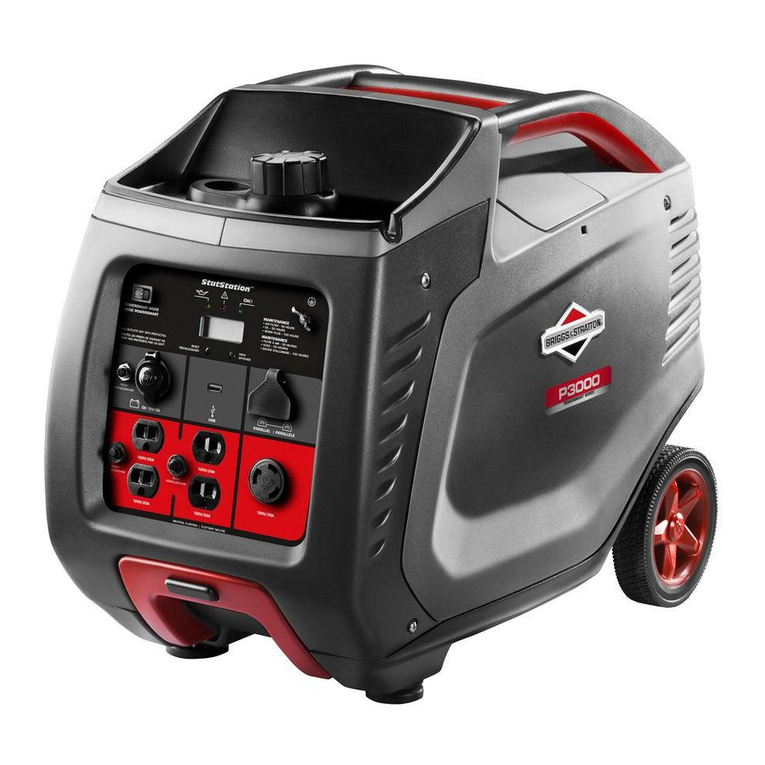
Briggs & Stratton
Briggs & Stratton P3000 manual
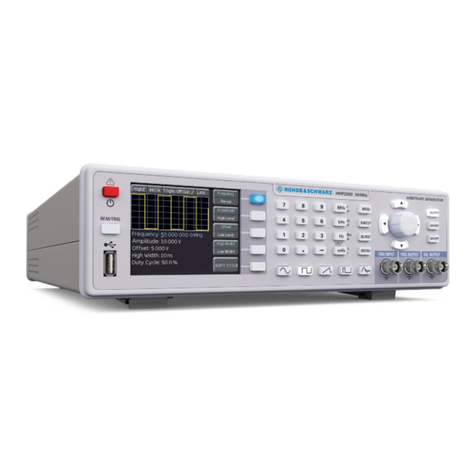
Rohde & Schwarz
Rohde & Schwarz HMF2525 Programmer's manual
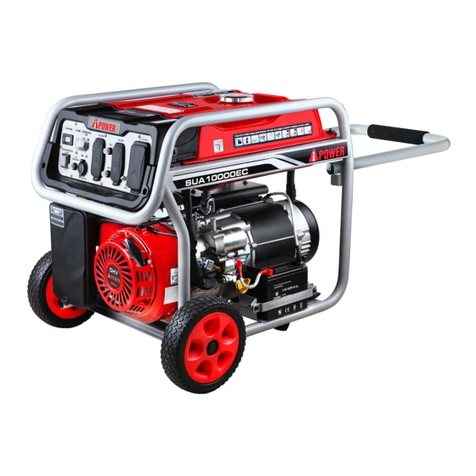
iPower
iPower SUA10000EC owner's manual
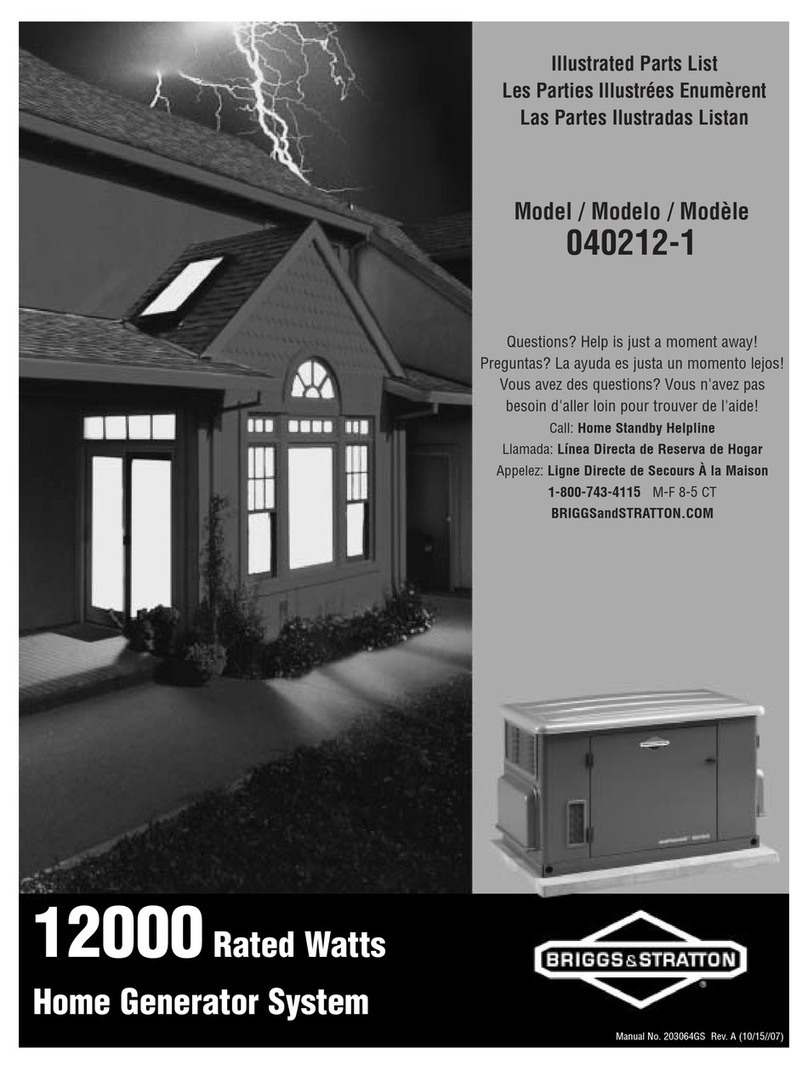
Briggs & Stratton
Briggs & Stratton 040212-1 Illustrated parts list
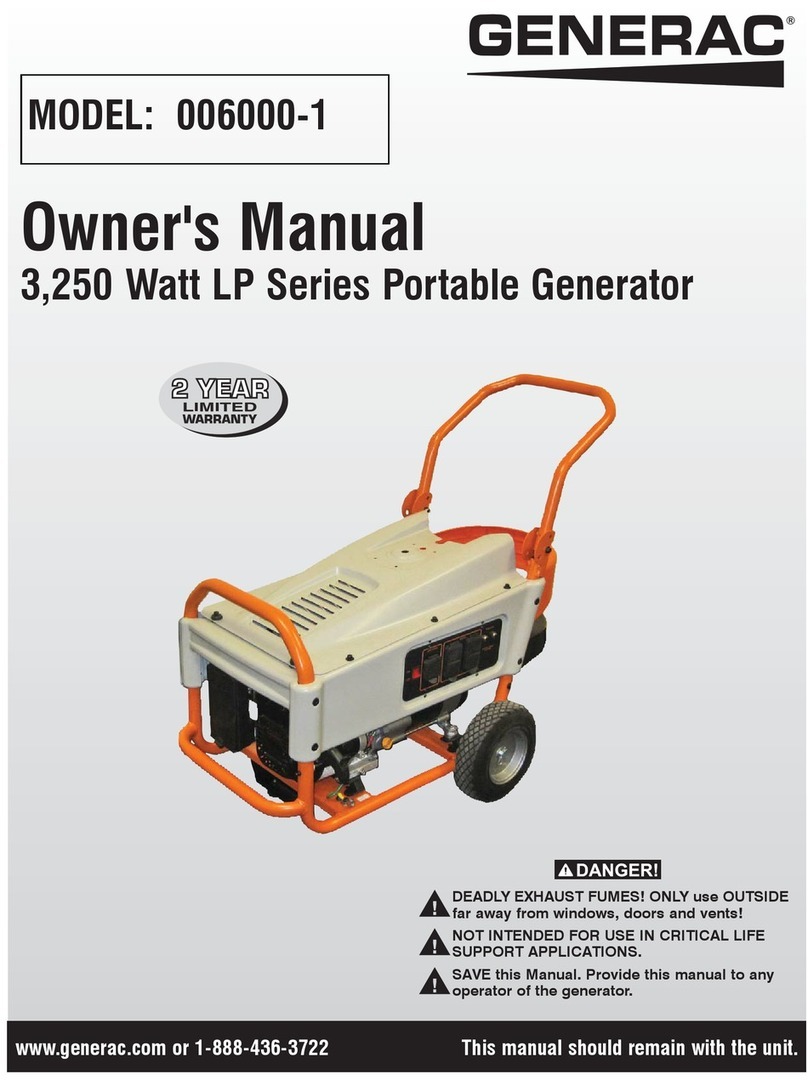
Generac Power Systems
Generac Power Systems 006000-1 owner's manual
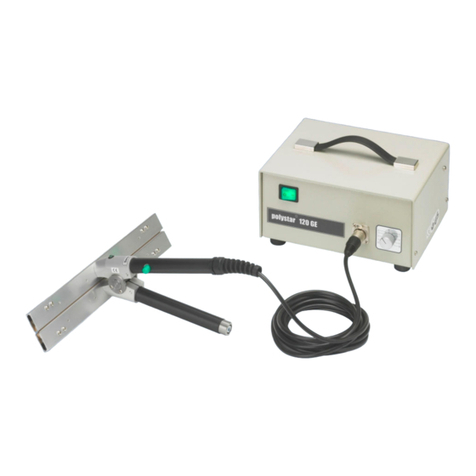
RISCHE + HERFURTH
RISCHE + HERFURTH POLYSTAR 120 GE Operating instruction

